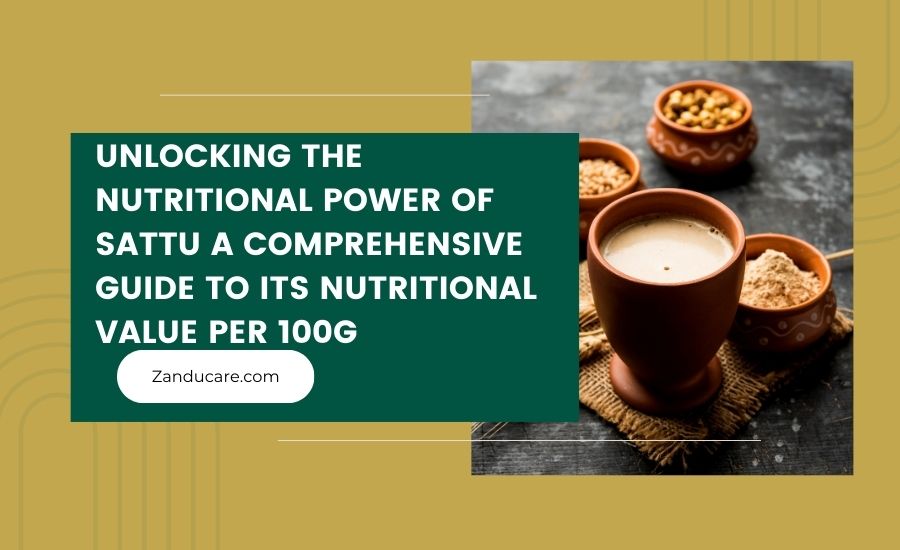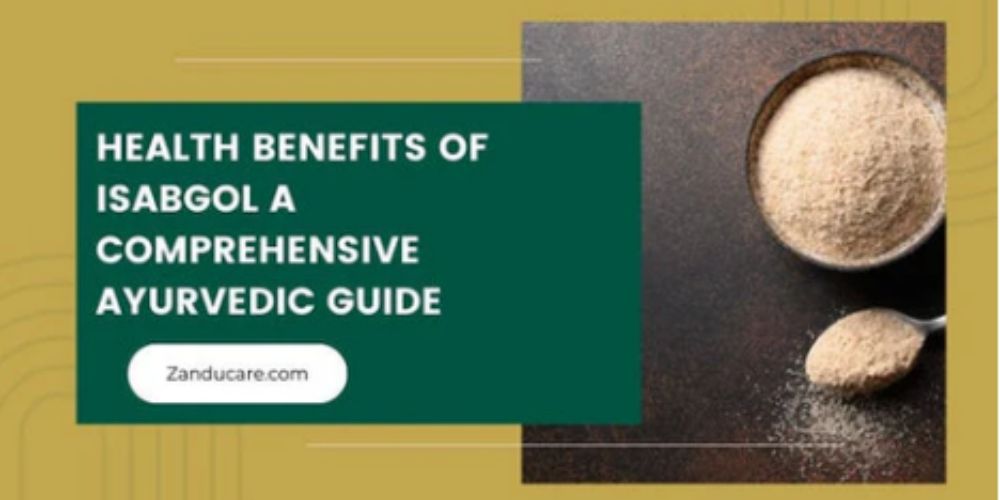
Raw & Unroasted | Protein & Fibre Rich | Aids Weight Management | Lowers Cholesterol

India's 1st Ayurvedic Blend to fulfil your Daily Nutritional Needs | Rich in Micronutrients, Protein, Fiber & Antioxidants | Improves Immunity & Gut Health
Indian traditional flour, or atta, is produced from roasted pulses like chickpeas. For many centuries, it has been a mainstay in Indian homes due to its high nutritional content and adaptability. It's critical to comprehend the nutritional advantages of Sattu because it's a nutritional powerhouse with a high protein content, dietary fibre, and vital vitamins and minerals.
The traditional Indian medical system known as Ayurveda acknowledges the many health advantages of Sattu, which include improving digestion, increasing vitality, and enhancing general well-being. it is beneficial in hot weather because of its cooling qualities. Incorporating Sattu into daily menus can greatly maintain a balanced and healthful lifestyle.
|
Did you know
|
What is Sattu?

Sattu flour is produced by grinding and roasting cereals and legumes, typically chickpeas. It is a staple diet in many parts of Pakistan, especially in Karachi, Lahore, and Islamabad. Sattu is also consumed in India, Tibet, and Nepal.
People purchase many protein and energy beverages these days to keep their body's protein and energy levels stable. A natural energy-boosting beverage that is ideal for summer is Sattu. Its cooling qualities offer much-needed respite from the intense heat. Some of the characteristics that set it apart are as follows:
High protein content: Sattu is the most beneficial and best source of protein for vegans and vegetarians, with 20–25 grams per 100 grams.
Energy booster: Complex carbohydrates are abundant in Sattu, giving you steady energy throughout the day and helping you stay focused and awake.
Manages blood sugar: Because of its low glycemic index, diabetics can consume it without experiencing blood sugar increases.
Rich in minerals: Sattu is rich in calcium, magnesium, iron, and potassium, which is beneficial for blood pressure control, bone health, and general well-being.
Sattu Calories & Nutritional value per 100g
Sattu's high nutritional content makes it a superfood and complement to a well-balanced diet. The following are a few nutrients found in Sattu that can support your overall health:
|
Nutrient |
Value per 100g |
|
Calorie |
413 kcal |
|
Protein |
26 g |
|
Carbohydrates |
60 g |
|
Dietary Fiber |
18 g |
|
Fat |
6.97 g |
|
Calcium |
380 mg |
|
Magnesium |
270 mg |
|
Iron |
58ppm |
|
Potassium |
825 mg |
Health benefits of Sattu
Below are the health benefits of Sattu:
Boosts energy levels

Do you feel exhausted? Summertime energy depletes more quickly, so you only need a cool energy drink to keep your energy levels up. Don't worry! Sattu is your saviour!
It has complex carbs, which release energy gradually and keep you feeling energized for extended periods. Sattu's diverse carbs, proteins, and minerals deliver energy gradually so you may stay active over extended periods. It's the ideal energy drink for before a workout. Athletes and those with active lifestyles benefit from it.
Promotes weight management
Feeling like you always fail at controlling your weight? Don't worry—there are plenty of people in your situation who try to control their weight with home-based diets. Sattu is a desi diet that can help you lose weight safely and effectively. It is high in fibre, lowers calorie intake, increases feelings of fullness, decreases cravings, and helps control weight.
Regulates blood sugar levels
Because Sattu's complex carbs release energy gradually, it's a great snack for athletes and those with active lifestyles. Carbohydrates, proteins, and minerals work together to restore glycogen stores, which helps keep muscles from tiring out and improves endurance when exercising.
Promotes digestive health
Sattu's high fibre content helps to maintain a healthy digestive tract. It is a natural laxative, encouraging frequent bowel motions and avoiding constipation. Furthermore, Sattu's soluble fibre supports gut health by feeding good gut flora and functioning as a prebiotic.
Promotes gut health
Do you struggle with constipation or indigestion? To bid stomach issues farewell and welcome to a healthy gut, include Sattu in your diet regularly.
Yes, Sattu can help resolve all of your digestive problems. It functions as a prebiotic, promoting gut health by feeding good bacteria in the gut. Its high soluble fibre helps avoid bloating, eases constipation and irritation, and encourages regular bowel movements.
Enhances heart health
Sattu is heart-friendly because it naturally contains low levels of fat and cholesterol. Dietary fiber lowers LDL (bad) cholesterol levels, which lowers the risk of cardiovascular illnesses. Sattu's high potassium and magnesium content helps to maintain normal blood pressure, which is even better for heart health.
Also, check nutritional values of :
| Kala Chana | Sabudana |
Sattu in Ayurveda

Sattu, a flour made from roasted gram, is highly valued in Ayurveda. This ancient Indian system of medicine recognizes Sattu for its numerous health benefits. Rich in nutrients, Sattu is known to boost energy, improve digestion, and help detoxify.
From an Ayurvedic perspective, Sattu balances the three doshas: Vata, Pitta, and Kapha. It cools the body, making it especially beneficial for those with excess Pitta. Its grounding properties help stabilize Vata, while its light and dry nature assists in managing Kapha.
Ayurveda recommends specific ways to consume Sattu to maintain dosha balance. For Vata types, mixing Sattu with warm water and adding a pinch of salt can be beneficial. Pitta types should be taken with cool water and some sugar or jaggery to enhance its cooling effect. Kapha types can benefit from Sattu by adding spices like ginger or black pepper to boost metabolism.
Regular consumption of Sattu, particularly in the summer, helps keep the body hydrated and cool. It is best consumed in the morning or as a midday drink. According to Ayurvedic principles, Incorporating Sattu into your diet can thus support overall health and well-being.
How to incorporate Sattu into your diet?
For a lot of recipes, Sattu is the ideal ingredient. Here are some tasty and simple recipes to incorporate Sattu into your diet:
Sattu paratha
One of my favourite Indian breakfast foods is paratha. Yes? Tomorrow morning, try the Sattu Paratha for breakfast. It's an easy recipe; just knead dough with Sattu powder and stuff with your preferred vegetables. Savour your Sattu Parathas with yoghurt or chutney!
Sattu laddoos
Do you like laddoos? If so, give Sattu laddoos a try now! These dietary practices combine jaggery, ghee, and nuts to make Sattu laddoos. They are the ideal energy enhancer and a healthy substitute for sugary sweets.
Sattu sharbat (Drink)
This one is one of the greatest, healthiest, coolest, and most refreshing summertime beverages. Enjoy your delightful drink of Sattu powder, water, lemon juice, cumin powder, and black salt.
Potential side effects and precautions
Kidney stones
Since Sattu may contain oxalate, which can promote the production of kidney stones, some specialists urge care for patients who already have kidney stones. Should you be concerned, speak with your physician.
Digestive discomfort
The high fibre content of Sattu (around 8–10 grams per 100 grams) can result in gas and bloating, particularly in individuals who are not used to it or if it is ingested in excess.
Reduced mineral absorption
Phytates found in Sattu may prevent the absorption of several minerals, including zinc and iron. Eat foods high in vitamin C and Sattu to help absorb minerals and lessen this effect.
Gluten sensitivity
Grain gluten, such as barley, wheat, or chickpeas, is used to make Sattu. Those who have celiac disease or are gluten intolerant may have negative effects from this. These folks had the choice of sorghum Sattu or millet.
Conclusion
Sattu, a nutritious flour made from roasted gram, is highly valued in Ayurveda. Its cooling, grounding, and light properties balance the three doshas—Vata, Pitta, and Kapha. Consuming Sattu with specific adjustments for each dosha can enhance its benefits.
Sattu boosts energy, improves digestion, and aids in detoxification, making it a versatile addition to your diet. Regular consumption, especially during the summer, helps keep the body cool and hydrated.
Including Sattu in a balanced diet offers numerous health benefits, supporting overall wellness. Embrace this Ayurvedic superfood to enjoy its rich nutritional value and maintain a dosha balance.
FAQs
1. What is the nutritional value of Sattu per 100g?
Sattu contains about 400 calories per 100g. It provides approximately 65g of carbohydrates, 20g of protein, and 7g of fat. It is rich in dietary fiber, vitamins like B-complex, and essential minerals like iron, calcium, and magnesium. Sattu is a powerhouse of nutrients, making it an excellent addition to a balanced diet.
2. Is Sattu good for weight loss?
Indeed, Sattu helps people lose weight. Because of its high fibre and protein content, it makes you feel fuller for longer and consume fewer calories. It also increases metabolism and gives you long-lasting energy. Sattu diluted with water can be consumed as a wholesome, low-calorie snack that supports good weight management.
3. Can diabetics eat Sattu?
Sattu is suitable for diabetics. Because of its low glycemic index, it aids in preserving steady blood sugar levels. Because of the high fibre content, sugar is absorbed more slowly, avoiding spikes. When incorporated into a diabetic's diet, Sattu can help control appetite and supply vital nutrients without significantly affecting blood sugar levels.
4. How does Sattu benefit digestive health?
Sattu's high dietary fibre content promotes digestive health. By encouraging regular bowel motions, this fibre helps people avoid constipation. Additionally, it promotes the growth of good bacteria, which benefits intestinal health. The calming effects of Sattu can improve digestion by decreasing acidity and calming the digestive tract.
5. Are there any side effects of consuming Sattu?
Sattu is generally safe, but excessive consumption may cause bloating or gas due to its high fibre content. People with allergies to legumes should avoid it. Introduce Sattu gradually into your diet to monitor how your body responds and avoid digestive discomfort.
6. How can I incorporate Sattu into my diet?
You can include Sattu in your diet by blending it with a pleasant drink like buttermilk or water. Add it to soups for an extra protein boost, or use it to make Sattu parathas or smoothies. Another option is to combine Sattu with water and spices to make a tasty, nourishing drink.
7. What are the Ayurvedic benefits of Sattu?
Sattu is valued in Ayurveda for balancing the Pitta, Kapha, and Vata doshas. Its grounding quality balances Vata, while its cooling qualities calm Pitta. The bright and dry properties of Sattu regulate Kapha. Sattu promotes vitality, facilitates digestion, and facilitates detoxification—all of which are in line with Ayurvedic health and wellness principles.
References
- The traditional Indian medical system known as Ayurveda acknowledges the many health advantages of Sattu, which include improving digestion, increasing vitality, and enhancing general well-being.(https://www.researchgate.net/)
- A natural energy-boosting beverage that is ideal for summer is Sattu.(https://www.researchgate.net/)
- Fat- 6.97 g (https://ijrpr.com/)
- Iron- 58 ppm(https://ijrpr.com/)
- Health benefits of Sattu. (https://www.researchgate.net/)





